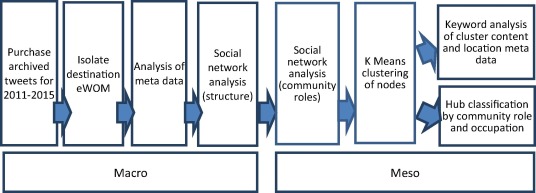Artificial Intelligence Enabled Customer Engagement: Using Chatbots (Airfestbot) at Bournemouth Air Festival
Bournemouth Air Festival – www.bournemouthair.co.uk attracts on average 1 million attendees over 3 days and recently awarded as national “Tourism Event of The Year 2015”(Bournemouthair, 2015) by Visit England. These attendees are a mix of residents and tourists who may need information or support during their visit to the airfestival. The airshow is a complex event as it is a large scale outdoor event with a number of components. The scale of the event, set along 3 km of beach creates a challenge to provide information in a timely manner using signs. Also, as an outdoor event, activities are affected by weather, resulting in changes to the schedule or even cancellation of activities. The event organizers have taken advantage of mobile communications and maintain a number of social media channels. This year, the team went further to collaborate with Bournemouth University and Iamcatobot to launch a chatbot, Airfestbot to provide customer support via twitter and facebook messenger.
Messaging platforms such as Facebook Messenger, Telegram, Kik and WeChat have emerged as most frequently used online customer services. As a synchronous form of communication, messaging is increasingly used to obtain advice during an experience. Organizations face issues in managing these communications as it requires dedicated personnel to respond to individual requests, a significant resource commitment. While text based conversational agents or chatbots have a long history, recent advances in Artificial Intelligence (AI) have improved their ability to understand questions and provide appropriate responses. Chatbots can now to interact with users in a conversational manner using text or audio, supporting customer engagement efforts in the form of individual attention to requests from large numbers of users and encourage interactions between users and organisations. Chatbots have been used for a variety of commercial and non commercial applications. For commercial applications, chatbots have been used to provide customer support, purchases, information and interactive entertainment to users. For non commercial applications, chatbots have been used to support mental health and provide information for social support organizations (McTear, Callejas and Griol 2016). In these applications, chatbots can improve efficiency of frontline staff and user engagement.
For efficiency, chatbots can hold conversations with multiple users over messaging services, websites and social media simultaneously. The cost of operating in this manner will be expensive to do manually, as multiple employees will be required to provide responses. Chatbots can also be used to provide consistent responses to routine requests across online platforms with reduced errors or mistakes. For user engagement, chatbots can provide enhanced service quality such as communication in multiple languages (Kuo, Chen, & Tseng, 2017), provision of contextual information via options such as integrated menus and ability to communicate with differently abled users in a format that would be acceptable to them.

Airfestbot was designed and developed using a collaborative process that integrated the contributions of Bournemouth Council, Bournemouth University and Catobot Company. Dr Nigel Willams led the Bournemouth University research on social media engagement at Bournemouth Air Festival (Williams et al 2017) was used to provide initial information to guide development of Airfestbot. Bournemouth Council’s social media team provided frequently asked questions and resposes that would be used to provide information to users of Airfestbot. Technology for Airfestbot was provided by the Cato Bot Company Limited (CatoBot) ,a technology
company founded in the summer of 2016 specialised in the development of cognitive web applications that can read, hear, see and reason. CatoBot’s technological capacity is based on enterprise state-of-the-art machine learning technologies and a diverse team of independent engineers and designers. CatoBot is a young but fast growing technology startup that in its first year has managed to service a wide range of organisations for multinational enterprises, SMEs and public sector organisations aiming to improve operational productivity and public engagement.
The design consisted of a menu system to provide immediate access to relevant information within messenger and a natural language based response system. Airfestbot was then trained by council staff who it could understand a range of natural language queries. The bot was then launched 2 days before the event and managed to converse with several hundred respondents. The team overall were happy with the experiment and Airfestbot will be returning for Bournemouth Air Festival 2018. The team is also in the early stages of developing a Destinationbot that can support visitors all year round.
Williams, N., Inversini; A., Buhalis, D., Ferdinand, N., 2017 Destination eWOM drivers and characteristics, Annals of Tourism Research Vol.64 pp.87–101 http://doi.org/10.1016/j.annals.2017.02.007